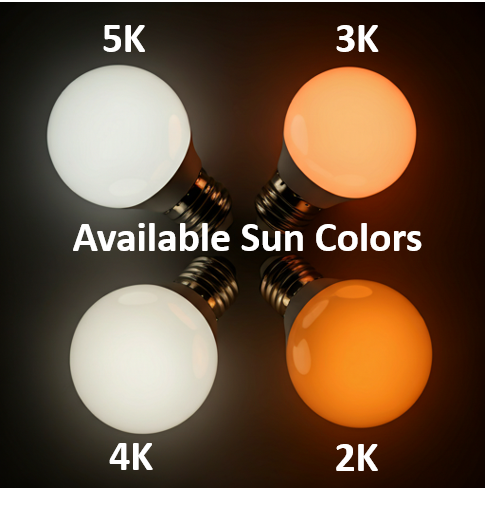Infrared LED bulb technology can be achieved in different ways. Most commercial products offer narrow-spectra deep red or infrared bulbs. However, novel technologies have recently emerged that enable full spectrum visible plus near-infrared enhanced LED lighting or NIR-enhanced LEDs. The goal of NIR-enhanced bulbs is not only to provide white visible light but also to help restore some of the infrared (IR) energy from artificial lamps that was lost when solid-state lighting (SSL) emerged as a dominant player in the lighting industry. It is well known that sunlight delivers almost 55% of its total radiated energy as IR. The NIR component of the solar spectrum is particularly useful in providing the energy needed by various lifeforms at the cellular level. All living organisms including the human body appear to use NIR energy in various biological and chemical processes. NIR light is able to penetrate into the inner layers of the skin, and almost 3 inches deep in some cases. Therefore, NIR energy can reach muscles, nerves and even bones. Medical studies have shown that NIR light can even help in healing certain inflammatory conditions and in repairing damage to the retina caused by ultraviolet and blue light. The effects of NIR light on the mitochondria (the bio cell powerhouse) have been compared to recharging a cell’s battery.
Unfortunately, conventional LED bulb technologies were developed with the aim of maximizing visible light, as perceived by the human eyes. This is determined by the daytime photopic or nighttime scotopic eye sensitivity curves. While the light cones within the human eyes are not sensitive to infrared, the rest of the body still absorbs and utilizes a significant part of the invisible IR energy.
 Using proprietary phosphor-converted LED technology, it is now possible to produce light fixtures and LED devices with enhanced near-infrared without compromising color quality. A low color quality standard LED bulb can be converted into an infrared LED bulb, which cam also emit a wide range of visible white color temperatures. The video below is an example of an advanced photonic technology used to convert standard LED bulbs to full spectrum sunlight, including infrared.
Using proprietary phosphor-converted LED technology, it is now possible to produce light fixtures and LED devices with enhanced near-infrared without compromising color quality. A low color quality standard LED bulb can be converted into an infrared LED bulb, which cam also emit a wide range of visible white color temperatures. The video below is an example of an advanced photonic technology used to convert standard LED bulbs to full spectrum sunlight, including infrared.
